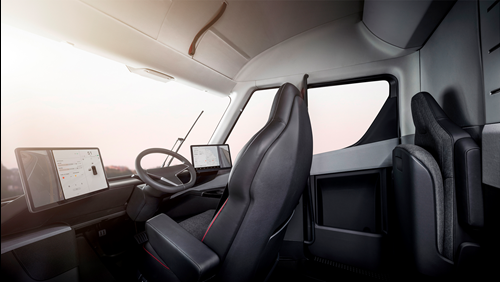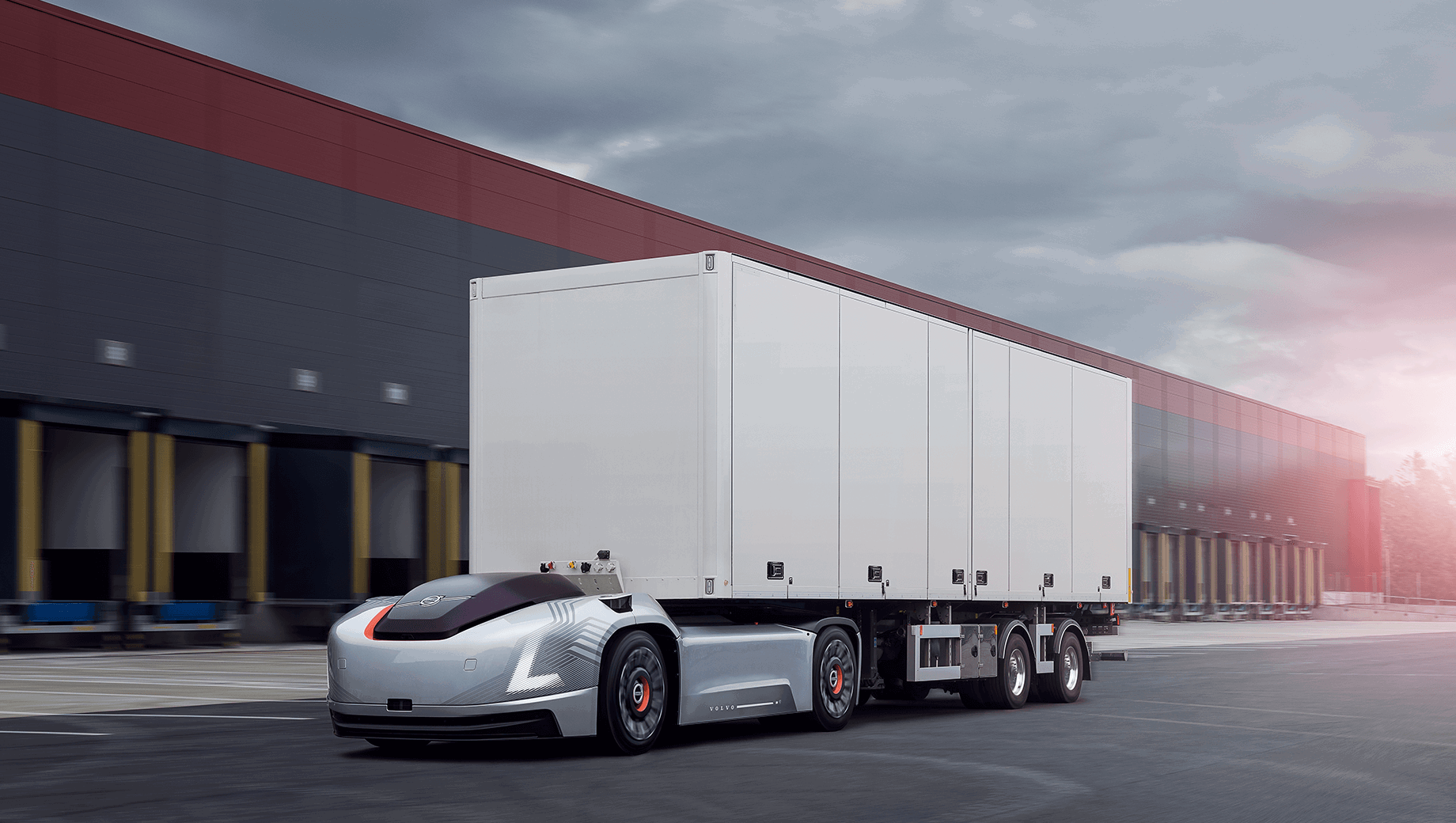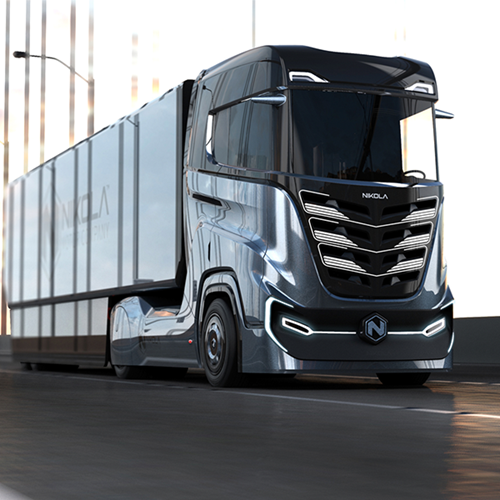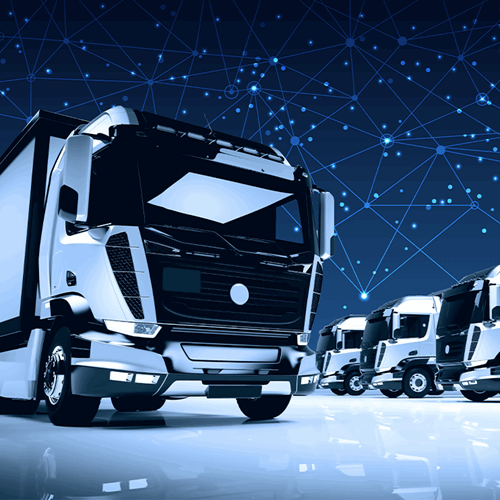Nothing burdens German freight companies as much as payroll costs. According to the DSLV Bundesverband Spedition und Logistik, those costs increased again in 2018, now accounting for 53.1% of the total process costs. For this reason alone, the industry is likely to be very interested in the design and development of self-driving commercial vehicles. But the demand for supporting technologies is also driven by safety and convenience issues. Driver fatigue continues to be one of the main causes of serious road accidents in Germany. Functioning advanced driver assistance systems not only make the day-to-day work of drivers easier. They never suffer from drowsiness – they react in fractions of a second. In this second part of our "Future of the Truck" series, we report on the state of development of automated trucks.
The five levels of automation
Automated driving is generally divided into five stages and begins with "assisted driving" (stage 1). Full responsibility still lies with the driver at this stage, with support from simple assistance systems. Stage 2 is already called "partially automated driving" and means that, under defined conditions, the vehicle can maintain its lane, or brake or accelerate. "Highly automated driving" (stage 3) is the first stage in which the driver can temporarily turn away from driving, but he or she must still be prepared to take the wheel at any time. At stage 4, in-vehicle technology already handles certain road sections (for example, highways) completely on its own, so passengers can turn to other occupations ("fully automated driving"). The final stage (5) is autonomous driving. At this stage, no driver is needed at all; the vehicle is fully networked, equipped with comprehensive sensor technology and high CPU power, and is thus "intelligent". It can carry out the entire driving process automatically and react independently even to unpredictable situations. The ADAC, however, proposes to replace the five levels with three operating modes ("assisted", "automated", and "autonomous" driving). This proposal is based on the fact that the line between assisted and partially automated driving is really impossible to draw meaningfully given the technological status quo.
Pilot project in the United States
Since there are still strict regulations regarding automated driving on public roads in Germany and parts of Europe, it is worth taking a look at the USA – the highways there offer ideal test conditions. The first self-driving trucks have long since been registered here for selected routes.
Daimler already marked the starting point in 2014, when the company presented the world's first (partially) autonomous truck, the "Mercedes-Benz Future Truck 2025". A year later, the company received road approval for the Freightliner Inspiration Truck in Nevada. That was the first ever for a truck with autonomous driving functions. Thanks to "Highway Pilot", a radar- and camera-based system, the driver can turn away from the wheel on the almost endless, straight US highways. This is made possible by functions such as lane-keeping, spacing, cross wind and emergency brake support. However, passing, lane changes, and leaving the highway still have to be done by the driver.
An initial commercial pilot project for completely driverless transport is also in the starting blocks. Fully automated trucks by Chinese startup TuSimple are currently operating for the United States Postal Service between Phoenix and Dallas (about 1600 km) – although initially under the supervision of drivers and safety engineers. A sophisticated camera and vision system, coupled with radar and lidar systems, offers 360° sensor technology with a visibility of 1000 meters. Thanks to its excellent night vision, the truck can drive round the clock.
Things are happening in Europe, too
If you think the Americans are going to autonomously leave Europeans behind, though, you're wrong – self-driving concepts are being worked on at high pressure on our continent, too.
The Swedes are ahead of the pack: this is where DB Schenker, together with transport company Einride, is taking a consistently driverless path. The so-called "t-pod" is the world's first autonomous, fully electric truck without a driver's cab to be approved for a public road. It currently transports goods commercially between a warehouse and a DB Schenker terminal on a shuttle route that covers a distance of 300 to 400 meters. Also equipped with Nvidia software, the CPU processes radar information on position and speed with 20-millimeter accuracy, lidar data for object recognition, and camera data for detecting colors, contrasts, road markings, and traffic signs. The "t-pod" is loaded with up to 15 Euro pallets – fully loaded, its gross vehicle weight is 26 tons. At the moment, however, the t-pod is only approved for a speed of 5 km/h and only on the condition that the steering can be taken over at any time by remote control. But a first and nevertheless big step towards autonomous driving of level 5 has been made with the t-pod. Starting in 2020, its twin brother "t-log" will be launching an off-road variant for transporting wood to market.
Same country, same claim – different manufacturer: The unmanned semitrailers tractor unit "Vera" developed by Volvo recently started supplying the port of Gothenburg with heavy goods for a logistics company. The field test of this fully electric vehicle, which has a maximum speed of 40 km/h, is being monitored from a control tower and is intended for commercial use over short distances. The futuristic look – "Vera" is not even half the height of a normal semitrailers tractor – illustrates Volvo's autonomous approach to the project.

Source: Volvo Group Trucks Central Europe GmbH
And self-driving concepts are already being considered here at home, too. As part of the "aFAS" research project, for example, an autonomous safety vehicle was developed for use at mobile construction sites. After all, serious rear-end collisions are an ever-present risk with this type of vehicle. The autonomous truck carrying the construction site signs maintains a constant spacing from the vehicle in front. Even entrances and exits to controlled-access highways are no problem, according to the development consortium.
Source: aFAS-Projektbüro/Hessen Mobil
But it's not just trucks that are seeing all the action. Passenger transport – and buses in particular – have also caught the eye of automation developers. Last year in Frankfurt am Main, the autonomous "Cube" minibus developed by Continental was tested in driverless operation on the university campus – very successfully. Two of the autonomous minibuses will be operating shuttle services on the banks of the Main in fall of 2019, which will then be partially closed to motor traffic.
Sweden is going one step further – directly into urban traffic itself. Scania will be working with bus company Nobina to launch a test run of autonomous buses there in 2020. The "Scania Citywide LF electric", 12 meters long with a capacity of up to 80 passengers, will start making its rounds – initially accompanied by experts – through a residential area 20 km from Stockholm.
Driverless trucks and buses will be the norm before autonomous cars.
It is not yet possible to predict when both the technical and the legal foundations for fully automated or autonomous driving will be in place. Especially since the expectations of the actors are also quite different. "While politicians and regulatory authorities are primarily pushing accompanied driving, where people can get involved in all difficult situations, larger freight companies are already thinking about dispensing with human drivers and monitors entirely, due to costs and acute staff shortages," says futurologist Dr. Bernhard Albert of Foresight Solutions. Essentially all major vehicle manufacturers and suppliers have recognized that there is no way around this technology. On its own, it cannot adapt to all means of transport all at once. "The individual will be reluctant to lose control of his or her vehicle with the steering wheel for some time to come, but we will see autonomous trucks earlier, especially on longer and simpler routes," predicts Albert, also mentioning driverless buses. "They will soon seem as normal to us as driverless subways do today." But of course they run on tracks.
In Part 3 of this series, we will report on the opportunities that digital connectivity and networking will open up for the logistics industry of tomorrow.






